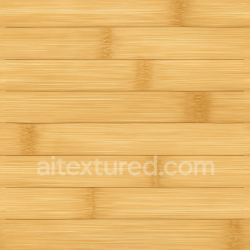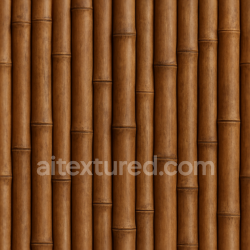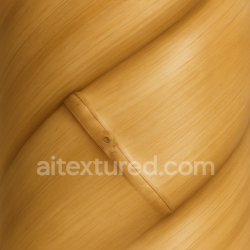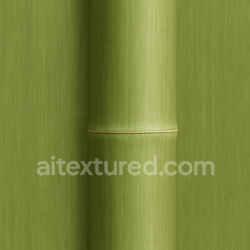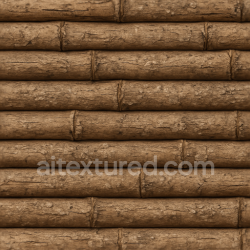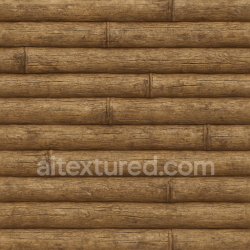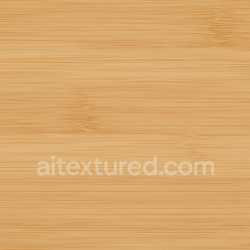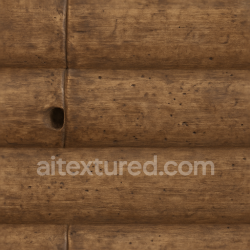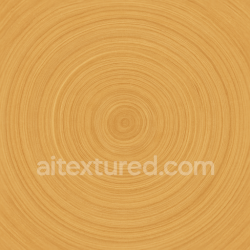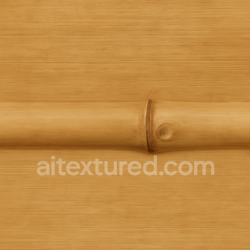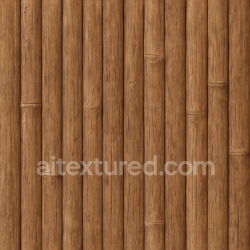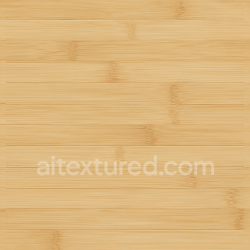Mastering Seamless PBR Sky Textures for Immersive 3D Environments
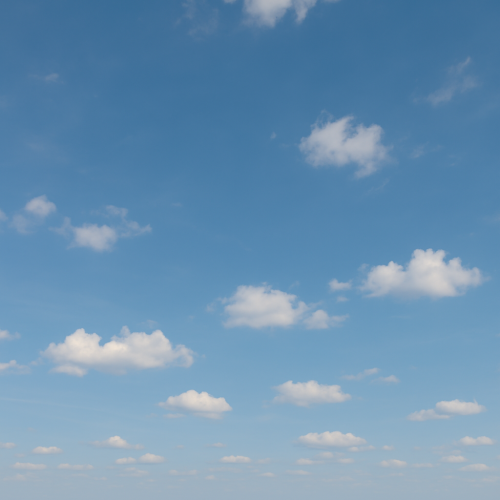
Acquiring photorealistic sky textures for physically based rendering (PBR) workflows requires a methodical approach that balances high-resolution capture, accurate representation of atmospheric phenomena, and efficient integration into real-time engines or offline renderers. Unlike terrestrial materials, the sky is a diffuse, volumetric environment with complex scattering properties, dynamic lighting, and subtle gradients, all of which must be captured and translated into texture maps that inform albedo, roughness, and other PBR channels with fidelity. Achieving this begins with choosing the appropriate acquisition techniques—principally high-resolution scanning and photogrammetry—while carefully considering environmental conditions, equipment calibration, and post-capture processing.
High-resolution scanning of the sky typically involves panoramic capture using specialized camera setups designed to record the full 360-degree environment at a very high spatial and tonal resolution. The objective is to produce an environment map that can serve as a base color (albedo) source with minimal chromatic aberrations or compression artifacts. Using a DSLR or mirrorless camera with a full-frame sensor and a high-quality fisheye or ultra-wide-angle lens is essential to capture the sky’s subtle gradients and color transitions. The lens choice affects chromatic aberration, vignetting, and distortion—all of which require careful correction during post-processing to maintain the physical accuracy of the texture maps.
A critical consideration during capture is dynamic range. The sky often exhibits extreme luminance variations, from the bright solar disc to the darker zenith or horizon regions, especially during sunrise, sunset, or overcast conditions. Utilizing high dynamic range imaging (HDRI) techniques is mandatory; this involves bracketed exposures merged into a single HDR environment map that preserves luminance data beyond the capabilities of standard 8-bit images. HDRI acquisition ensures that the albedo textures maintain correct energy values, which is crucial for PBR shading models that simulate light interaction accurately. Moreover, HDR captures provide a foundation for generating roughness and specular reflections in the environment, particularly relevant for reflective surfaces in a scene.
Photogrammetry of the sky is less conventional than terrestrial subject scanning but can be leveraged to capture volumetric and localized atmospheric phenomena such as cloud formations, haze layers, or fog banks. Using multi-angle photographs from multiple vantage points, photogrammetry software reconstructs 3D volumetric data that can be converted into volumetric textures or layered sky maps. While this approach requires more elaborate setups and post-processing, it allows the generation of height and normal maps representing cloud structure and atmospheric depth, which can be integrated into PBR workflows to simulate micro-variations and subtle surface details in sky domes or skyboxes. These height and normal maps add a tactile depth to the otherwise smooth sky textures, enhancing realism in real-time engines like Unreal Engine or Blender’s Eevee and Cycles renderers.
Environmental factors during acquisition are paramount. Sky texture capture should ideally be performed under stable atmospheric conditions to avoid inconsistencies caused by rapidly changing clouds or lighting shifts. Early morning or late afternoon light often provides the richest color variations, but these conditions change quickly, requiring rapid capture and rig calibration. Overcast skies yield diffuse lighting conditions that simplify albedo capture but lack dramatic highlights, while clear skies with scattered clouds introduce complexity in dynamic range and detail. For PBR workflows, capturing a variety of sky states—clear, partly cloudy, overcast, twilight—ensures a versatile texture library that can be blended or keyed in shaders to adapt to different scene lighting needs.
Calibration of equipment is essential to maintain color accuracy and consistency across captures. White balance should be set manually or calibrated using a color target exposed in the same conditions as the sky capture. This avoids color shifts that can propagate errors through albedo and roughness maps. Additionally, lens calibration is necessary to correct for distortion and chromatic aberration, which can otherwise introduce artifacts that disrupt seamless tiling and degrade visual quality in engine implementations. Calibration targets and gray cards should be incorporated into the capture pipeline when possible to facilitate accurate post-processing corrections.
One of the technical challenges in sky texture acquisition is achieving seamless tiling or edge blending in spherical or equirectangular projections. Since sky textures often wrap around a dome or form a skybox, any visible seams or mismatches break immersion and reduce realism. Captured images must be carefully stitched using software that supports HDR and lens distortion correction, ensuring pixel-perfect alignment and gradient continuity at boundaries. Post-processing workflows often include gradient smoothing and color grading to unify the texture’s appearance, particularly important when generating roughness maps that control microfacet scattering in PBR shading. The roughness channel for sky textures is typically subtle but critical for simulating atmospheric haze and light diffusion; it can be derived by analyzing luminance variance or by hand-painting based on cloud density and moisture content.
In terms of micro-variation, sky textures benefit from layered approaches that combine base albedo maps with procedural noise or detail maps to simulate flickering clouds, subtle haze, or thin cirrus formations. These details are often too fine or transient to capture reliably in a single scan, so authoring workflows in tools like Substance Designer or Blender’s shader editor allow artists to augment captured sky textures with procedural detail maps. These augmentations can be baked into roughness or normal maps, enhancing the perceived depth and complexity of the sky without adding geometric complexity to the scene.
Optimization for engine usage involves balancing resolution and data size against visual fidelity. Sky textures used in real-time applications like Unreal Engine require efficient UV layouts and mipmapping strategies to avoid aliasing and maintain sharpness at various viewing distances. HDR environment maps can be prefiltered to generate specular reflection probes, which are critical for PBR materials that rely on accurate environmental reflections. When integrating sky textures into Blender workflows, artists often convert HDRI maps into spherical or equirectangular formats compatible with both Eevee’s environment lighting and Cycles’ path-traced rendering. Additionally, baking ambient occlusion (AO) maps onto sky textures is generally unnecessary due to the sky’s diffuse nature and lack of self-shadowing geometry; however, AO can be simulated in cloud layers to enhance volumetric depth when using volumetric shading techniques.
In summary, acquiring photorealistic sky textures for PBR workflows demands a comprehensive strategy that combines high dynamic range panoramic scanning with selective photogrammetric capture of volumetric phenomena. Attention to calibration, environmental stability, and post-processing is essential to produce textures that maintain physical correctness across albedo, roughness, and height or normal channels. Properly stitched and optimized textures enhance the realism of PBR shading models in real-time engines and offline renderers, ensuring that the sky contributes convincingly to scene illumination and reflections while preserving the nuanced atmospheric details critical to immersive visual experiences.
Creating sky textures for physically based rendering workflows demands a nuanced approach that balances the inherent complexity of atmospheric phenomena with the technical requirements of real-time or offline engines. Whether the goal is to capture the serene gradients of a clear midday sky, the dramatic hues of a sunset, or the turbulent, moody textures of storm clouds, both procedural generation tools and photographic editing software play pivotal roles in producing high-fidelity, reusable sky textures optimized for PBR pipelines.
Procedural generation offers a powerful foundation for sky texture authoring, especially when aiming to generate seamless, tileable textures that maintain physical plausibility while allowing artistic flexibility. Tools such as Substance Designer, Houdini, or custom GLSL shaders enable the synthesis of sky features by simulating volumetric and atmospheric scattering effects, cloud formations, and light diffusion. Procedural methods excel in producing base color (albedo) maps with smooth gradients and intricate cloud details without the artifacts often introduced by photographic sources, such as lens flare or exposure inconsistencies. These base color maps require careful calibration to reflect the scattering coefficients and Rayleigh/Mie parameters typical of the atmosphere under various weather conditions, ensuring that the resulting color shifts and saturation mimic natural light behavior.
In terms of the ancillary PBR maps, procedural authoring allows for generating complementary roughness and height maps that further enhance the volumetric impression of clouds and sky gradients. Roughness maps, often derived from noise functions modulated by altitude and light direction, help simulate the diffuse reflection characteristics of vapor and particulate matter suspended in the atmosphere. Height maps, though less commonly associated with skies, can be used effectively to introduce subtle parallax effects or to support tessellation in volumetric cloud rendering. Ambient occlusion (AO) maps are generally minimal or absent in sky textures, given the uniform illumination environment; however, when authoring storm or heavily clouded skies, AO can be introduced to simulate shadowed crevices in cumulonimbus formations, adding depth and realism.
Photographic editing remains indispensable for capturing the nuanced color palettes and micro-variations present in real-world skies, especially for scenarios where unique or dramatic lighting conditions are desired. High-resolution sky panoramas or HDRI captures form the basis of photographic authoring, which then undergoes extensive preprocessing to fit the PBR workflow. The albedo channel extraction necessitates careful desaturation of specular highlights to avoid baked-in reflections that conflict with engine-based lighting models. Photographs must be linearized and tone-mapped appropriately to maintain consistency with engine gamma curves and physically based shading equations.
Editing software such as Adobe Photoshop or Affinity Photo is employed to blend multiple exposures, remove artifacts, and generate seamless tileable textures. Techniques like content-aware fill, clone stamping, and gradient blending help eliminate horizon artifacts or lens distortion. Photographic sky textures tend to be inherently non-tileable; thus, creating seamless textures involves procedural tiling algorithms or manual blending of edges, sometimes aided by symmetry transforms or edge mirroring. This process must consider the subtleties of cloud shapes and gradients to avoid noticeable repeating patterns or discontinuities when tiled across large skyboxes or skydomes.
The roughness and normal maps for photographic skies often require synthetic generation since these maps are not directly derivable from photographs. Normal maps can be generated by interpreting luminance variations in cloud shapes as height fields, applying Sobel filters or similar edge-detection algorithms to estimate surface normals. Roughness is typically derived from contrast levels in the albedo or height maps and should reflect the microsurface scattering traits of clouds—soft and diffuse, with variation corresponding to cloud density and moisture content.
Micro-variation is critical in both procedural and photographic approaches to avoid flat, artificial-looking skies. Introducing subtle color noise, gradient perturbations, and small-scale cloud texture variation help simulate atmospheric turbulence and moisture distribution. In procedural workflows, fractal noise layers with varying frequencies and amplitudes modulate these micro-details, while in photographic workflows, hand-painting or overlaying noise textures can achieve similar results. It is essential to ensure that these micro-variations are physically plausible and do not introduce banding or color shifts that break the illusion of natural light scattering.
Optimization for real-time engines like Unreal Engine or rendering software such as Blender is a key consideration throughout the authoring process. Sky textures often cover large areas and require efficient memory usage and minimal artifacts at varying distances and viewing angles. Employing mipmaps generated from base color maps with carefully tuned gamma correction prevents aliasing and preserves detail at oblique angles. Procedural sky textures can be baked into texture atlases or layered materials within engines, allowing dynamic blending between different sky states (clear, overcast, sunset) without needing to swap out entire texture sets.
In Unreal Engine, sky textures are frequently integrated with dynamic skyboxes or atmospheric fog systems. Here, PBR sky textures must be calibrated to match the engine’s physically based lighting environment, often requiring the use of LUTs (Look-Up Tables) to harmonize color grading and exposure. Material instances can modulate roughness and normal maps dynamically, simulating cloud movement or changing atmospheric conditions. These textures should be authored with consistent texel density and resolution to avoid mismatches when tiled across multiple faces of a skybox or skydome. Blender’s shader editor allows similar procedural layering and texture baking workflows, with the added advantage of node-based procedural generation tightly coupled to volumetric shaders for clouds and atmospheric scattering.
When authoring metallic maps, their role in sky textures is generally negligible, as atmospheric particles do not exhibit metallic reflections. However, metallic maps can be relevant when integrating sky textures into environment assets where reflective surfaces (such as wet ground or water bodies) interact with the sky. In such cases, ensuring that the sky texture’s albedo and roughness are physically calibrated aids in accurate reflections and refractions within these objects.
Calibration of sky textures against real-world references or physically based sky models (such as Hosek-Wilkie or Preetham models) is advisable to maintain scientific accuracy. Spectral data or calibrated HDR captures can be used to validate color and luminance values, ensuring that the textures behave predictably under different lighting setups. This calibration step reduces the need for post-import adjustments in the engine, streamlining the workflow.
In summary, blending procedural generation with photographic editing in sky texture authoring for PBR workflows empowers artists and technical directors to create realistic, versatile sky environments suitable for a wide array of atmospheric conditions. By carefully managing albedo, roughness, normal, and height maps, ensuring seamless tiling, and optimizing for target engines, these textures can convincingly replicate the subtle complexity of natural skies while maintaining efficient rendering performance. The interplay between physical accuracy and artistic control defines the efficacy of sky textures in immersive 3D scenes, making their careful authoring a cornerstone of high-quality environment creation.
Creating accurate PBR maps for sky textures presents a unique challenge within physically based rendering workflows because the sky is not a tangible surface but an environment element exhibiting complex lighting and atmospheric phenomena. Unlike typical material texturing, where albedo, roughness, and normal maps describe surface interactions with light, sky textures require a nuanced approach that simulates volumetric scattering, gradient transitions, and subtle detail without introducing artifacts or breaking physical plausibility. Achieving photorealism in sky PBR maps demands careful calibration of each map type, attention to the interplay between the texture and scene lighting, and optimization for real-time engines such as Unreal Engine or offline renderers like Blender’s Cycles.
The albedo, or base color map, for sky textures is fundamentally different from terrestrial materials because it represents ambient light scattered through the atmosphere rather than a reflective surface. Typically, this map is derived from high dynamic range (HDR) sky captures or procedurally generated sky models that capture the gradient from horizon to zenith, the color temperature shifts during different times of day, and atmospheric effects such as haze or cloud cover. When authoring sky albedo maps, it is essential to maintain linear color space data and avoid baked-in shadows or lighting inconsistencies that would conflict with global illumination calculations. Instead, the albedo should represent the intrinsic color of the sky at each pixel, independent of direct light sources, thus allowing the rendering engine to apply physically based lighting and scattering algorithms accurately.
To generate these albedo maps, artists often start with either calibrated HDRI sky scans or procedural sky generators that output spectral data; this can then be converted into sRGB or linear color space textures with proper exposure mapping. When using photographic sources, one must ensure that the images are free from lens artifacts such as chromatic aberrations or vignetting, as these can introduce non-physical gradients that degrade realism. In cases where the sky texture needs to tile—for example, in dome environments or skyboxes—procedural gradients or noise layers can be employed to blend horizon and zenith colors smoothly while maintaining seamless edges. However, tiling sky textures are generally avoided for cinematic skies because the sky is inherently non-repetitive; instead, large high-resolution textures or HDRI maps are preferred.
Roughness maps for sky textures are less intuitive but crucial when simulating reflective surfaces such as water bodies or glass that mirror the sky’s appearance. Within the sky texture itself, roughness can be used to modulate the glossiness of clouds or atmospheric particles by encoding micro-variations in scattering properties. This can be achieved by analyzing cloud density and particle size distributions from volumetric simulations or satellite data and translating these into grayscale roughness values that dictate the sharpness of reflections and highlights. For example, thicker cumulus clouds might have lower roughness values to represent specular highlights, whereas thin cirrus clouds would have higher roughness to diffuse reflection. When authoring roughness maps, it is essential to calibrate values against physical reference data or measured BRDFs of atmospheric phenomena, ensuring that the roughness range maps consistently to the engine’s material model.
Normal maps for skies are unconventional, as the sky itself lacks a solid surface to define geometric perturbations. However, normal maps can be utilized to simulate volumetric cloud layers or subtle atmospheric turbulence by encoding pseudo-relief details that interact with directional lighting. These normal maps are often derived from high-resolution cloud height maps or fluid simulation outputs that capture the undulating surface of cloud tops and atmospheric waves. Care must be taken to maintain the correct tangent space orientation and to avoid excessive bump intensities that would visually detach the sky from its volumetric nature. In practice, these normal maps are applied to sky dome meshes or volumetric shaders, where they modulate light scattering and shadowing without contradicting the large-scale smooth gradients of the base texture.
Ambient occlusion (AO) and height maps generally have limited applicability in sky PBR texturing due to the lack of defined geometry and occlusion in the atmosphere. However, AO can be creatively used in volumetric cloud systems to simulate self-shadowing within dense cloud formations, enhancing depth perception and realism. This AO data is typically generated from volumetric simulations or 3D noise textures and baked into 2D maps that represent occlusion factors across the cloud layer. Height maps can similarly encode cloud thickness for parallax effects or for driving other shader parameters such as subsurface scattering or translucency. When baking AO or height maps for sky textures, precision and calibration against volumetric data are critical to avoid unnatural shadowing or flattening effects.
Metallic maps are generally not applicable to sky textures since the sky does not exhibit metallic reflections. However, in hybrid scenarios where the sky texture is integrated with reflective surfaces—such as metallic aircraft panels or spacecraft windows—metallic maps are essential for separating the sky’s diffuse environment contribution from specular metallic reflections in the shader. Thus, metallic maps remain relevant only in the context of compositing sky textures with other materials.
From a workflow perspective, acquiring sky texture data for PBR maps typically involves a combination of HDR photography, satellite imagery, and procedural generation. HDR panoramic sky captures provide accurate environmental lighting information and color gradients, which can be separated into albedo and roughness components by isolating diffuse and specular contributions using image processing techniques or photometric calibration. Procedural sky models, such as those based on the Preetham or Hosek-Wilkie algorithms, allow for parametric control over atmospheric scattering parameters, generating textures that can be baked into PBR maps with consistent physical properties. Volumetric cloud simulations, rendered to texture slices or spherical projections, provide data for normal, AO, and height maps, enriching the sky’s visual complexity.
Tiling sky textures must be approached cautiously due to the sky’s inherently non-repetitive nature. When tiling is unavoidable, seamless gradients and noise layers should be blended carefully to avoid visible seams or repeating patterns that break immersion. Micro-variation within the sky texture is typically introduced through subtle noise overlays or procedural detail in cloud formations, simulating atmospheric turbulence and particle density fluctuations. These micro-variations can be encoded in roughness or normal maps to add realism without overwhelming the smooth color gradients of the sky.
Calibration remains a cornerstone of accurate sky PBR texturing. All texture maps must be calibrated to the scene’s lighting environment to maintain consistency in brightness, contrast, and color temperature. This often involves matching the sky textures to the renderer’s exposure settings, tone mapping curves, and color management pipelines. Using linear workflow color spaces and maintaining proper gamma correction ensures that the sky’s albedo and derived maps interact correctly with physically based lighting models. Additionally, reference to real-world sky data such as measured sky luminance distributions or satellite weather data can inform adjustments to map values and shader parameters, enhancing physical accuracy.
Optimization is critical, especially for real-time applications. Sky textures are usually large and high-resolution to capture subtle gradients and cloud details, but excessive resolution can impact performance. Techniques such as mipmapping, texture streaming, and procedural detail generation help balance quality and efficiency. In engines like Unreal Engine, sky textures are often integrated into sky dome or sky sphere meshes with specialized sky shaders that sample multiple PBR maps dynamically, allowing for time-of-day transitions and weather variations. Blender’s material nodes provide similar flexibility for offline rendering, where procedural and image textures combine to drive shader inputs for albedo, roughness, and normals, often augmented with volumetric scattering shaders to simulate atmospheric depth.
Practical tips for working with sky PBR textures include starting with physically accurate HDRI captures or procedurally generated sky models as the foundation. Avoid baking direct lighting into the albedo to preserve correct global illumination interaction. When generating roughness and normal maps, base them on measurable atmospheric properties or simulation data rather than arbitrary artistic choices. Maintain consistent color spaces and calibrate exposure throughout the pipeline. Use volumetric data where possible to inform AO and height maps within cloud layers. Finally, test the sky textures in the target engine under a variety of lighting conditions to ensure seamless integration and believable transitions.
In summary, creating accurate PBR maps for sky textures requires a specialized approach that respects the sky’s volumetric nature and complex atmospheric interactions. By carefully authoring albedo maps free from baked shadows, generating roughness and normal maps from cloud and atmospheric data, and calibrating all textures to physical lighting models, artists and technical directors can achieve photorealistic skies that enhance the realism and immersion of their 3D environments. Proper integration with rendering engines and adherence to linear workflows further ensure that sky textures behave consistently across diverse lighting scenarios and platform constraints.
